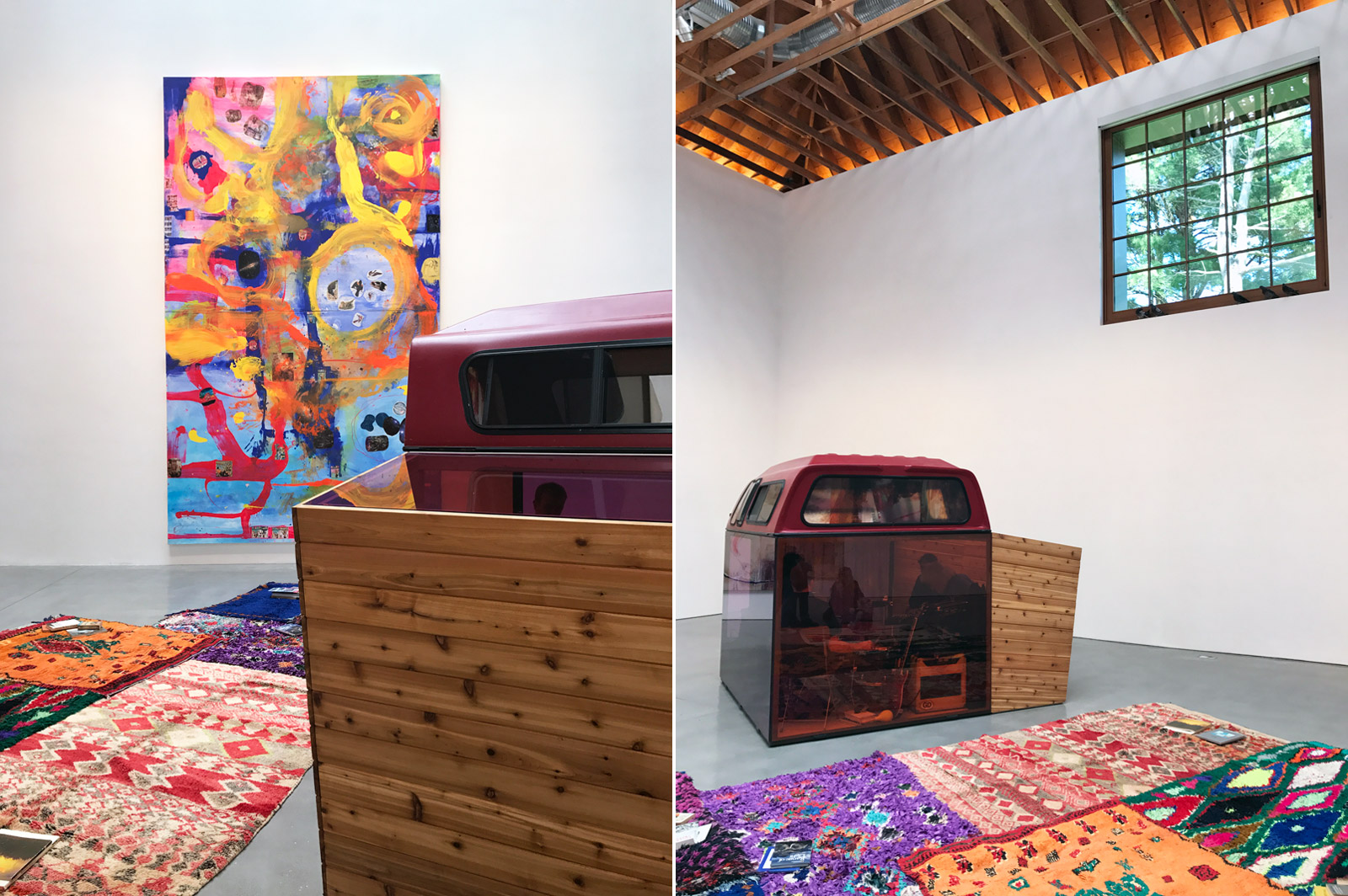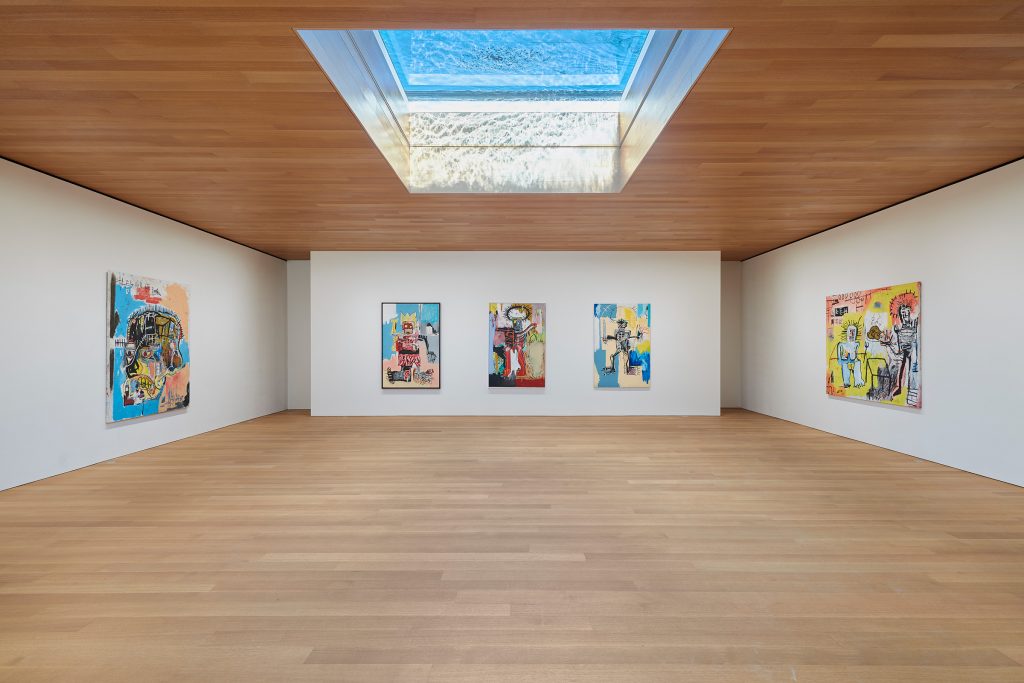Artist Sadie Laska Curates “Animal Farm” at The Brant Foundation Art Study Center
An engaging group exhibition of pretty, powerful pieces that conceal unforeseen depth

A little over an hour outside of New York City, The Brant Foundation Art Study Center sits atop sprawling acres in suburban Connecticut. Far from an unlikely artistic destination, the center—designed by Richard Gluckman—has long played host to riveting contemporary art exhibitions. The most recent, “Animal Farm,” might be its most important to date. Curated by artist and musician Sadie Laska, the show presents more than 50 works drawn from various movements spanning half-a-century. Visually, there’s a playfulness to exhibition and the art within. It’s very easy to walk through both floors and simply enjoy the pieces Laska selected. Of greater importance, arguably, is a curatorial experience Laska weaves through out: bright, eccentric and poppy works have great political depth if you want to delve inward.

“I was asked kind of quickly to curate the show,” Laska explains to CH. She was approached in January as a result of scheduling changes at the foundation. “Usually the exhibitions here center on one artist that the Brants have collected,” she continues, “there wasn’t enough time for an artist to do this type of [solo] show. Peter Brant [the entrepreneur, and founder of The Brant Foundation] began looking for a guest curator, and was considering an artist to curate rather than an academic curator.” Laska had performed at the foundation and through friends found herself interviewing—and then making the exhibition come together in three months time. “It was impulsive. It was write a list and get it done.” She began with the tone. “I knew the show was going to open in the spring. I was thinking about it all in a dark winter moment, post -Trump inauguration.” She met with Brant the day after returning from DC’s Women’s March. “I just thought ‘what kind of show do people need to see right now?'” she says.

As the exhibition title implies, political messaging can be expected. There are time-specific resistance pieces, some of which are recent though all are applicable to today. On a more superficial level, there’s also a lot of animal-themed or animalistic art: William Copley’s horses, a goat by Laura Owens, Josh Smith’s fish, and more. “Animal Farm” predominantly features paintings, but there’s also video and sculpture on site. “All of the paintings have a similar directness,” Laska adds, even though their genres and movements differ greatly. One will view surrealism beside neoexpressionism, personal narratives abut societal commentary. High art extends from low. There’s comedy, cartoons and sex. And all of it fits together.

The Brant Foundation space is broken up into subsections. It seems as if every nook has been offered a statement piece that’s draped in accent works—again, all enjoyable at surface level but stimulating intellectually and politically if one so chooses. From the exhibition’s oldest painting, “Peace” (1953) by Wally Hedrick, to Sarah Braman’s brand new “Badger Den (Let’s read together)” (2017) sculpture, much of the exhibition encourages consideration in unconventional ways. Exemplifying this, sculptor Lonnie Holley’s “Riding Through My Roots Too Fast” (2004) applies found wood, wire and fabric to an old motorcycle frame. It’s curious, contemplative and even a bit post-apocalyptic. As the artist himself says, it’s about ignoring the lessons of our ancestors: “We are now speeding through this age of technology and a lot of us are not reading the manuals. It is costing us.”

The exhibition’s top floor acts much like a crown. Here, visitors bear witness to gems from the Brant collection—a Haring, Scharf and Basquiat, each of significant power. Laska positions the room almost as if it existed in a fictional landscape. Haring’s Mickey Mouse is positioned beside a vibrant Pink Panther by Katherine Bernhardt. Scharf’s psychedelia counters Basquiat’s eerie self mythologizing. And (recent Jack Shainman Gallery addition) Nina Chanel Abney’s “Si, Mister” (2017) seems to bind the floor’s colorful character studies together, with gusto. Ultimately, Laska’s assembled an enjoyable, cohesive experience that positions famous names beside emerging ones—and all of the works will speak if you’d like to listen.

“Animal Farm” is open to the public, though scheduling a free tour in advance is required. It runs now through September 2017 at The Brant Foundation Art Study Center, 941 North Street, Greenwich, CT. It’s worth mentioning that if you’re heading to Connecticut for an art excursion, stops at the Philip Johnson Glass House and SANAA-designed Grace Farms center (both in nearby New Canaan) will not disappoint.
Images by David Graver












